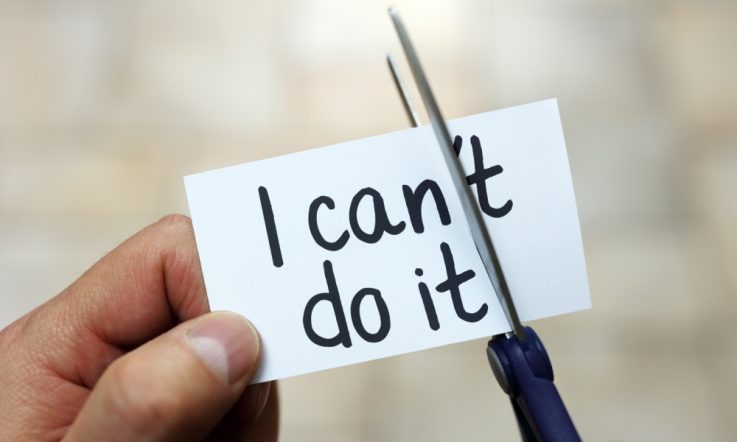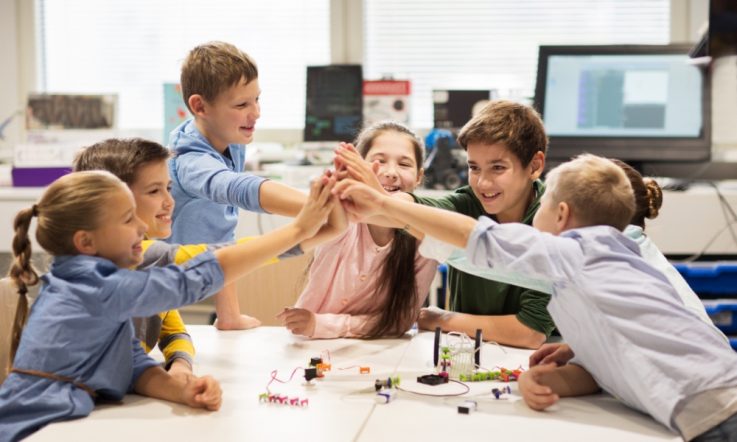‘At no point is any journey embarked upon with a full staff approach a linear one. Instead all members of staff start at a different place, and the journey itself often has loops and twists and completely starting over.'
Philippa Mulqueen, a teaching and learning coach who helps lead professional learning at Pakuranga College in New Zealand, adds that ‘nothing worth doing should be so easy to implement that it just happens seamlessly'.
The Specialist Classroom Teacher (SCT) is reflecting on the implementation of a school-wide focus on effective use of student voice. The ongoing aim has been not only to invite students to share their views, but to make it a routine occurrence and ensure staff respond and act.
Student voice has been a key part of staff professional learning at the Auckland secondary school for several years. Elements have included student presentations to staff and the development of teaching and learning partnerships where students are asked what makes for ‘effective teaching', about their own cultural identity, and what it means to be a Pakuranga student.
In the last couple of years, the focus has been on how to engage all students, and in a more timely way that prompts an immediate response. Specifically, one question for staff professional learning reflection has been ‘How might we invite and respond to student voice in ways that explicitly seek to improve students' engagement, interest, understanding and achievement?'
Giving the example of collecting feedback at the end of a course, Mulqueen and colleague Kylie Kilmartin – an Assistant Head of English and Media Faculty who also helps lead professional learning – explain that there needed to be a shift in mindset. ‘Previously, the purpose of student voice by asking for it at the end of the course was about making some small changes for the following year. It was not about making the course necessarily better for the students sitting in front of you.
‘However by using student voice more frequently it allowed for teachers to tweak the programs and courses as they went – asking if something was working and making a change there and then to suit the students in front of them.'
Instead of simply making assumptions about how best to support students, teachers are challenged to recognise these assumptions and collect student voice to explore if this is actually the case. Mulqueen and Kilmartin say getting all staff on board, and ensuring feedback is more than just a ‘box ticking exercise' but a transparent process to be valued, has been an ongoing process.
Staff were provided with seven readings to stimulate reflection and discussion in cross-curricular groups. These included the work of Russell Bishop and Bere Merryman (2009), Sara Bragg and Michael Fielding (2005), and Eric Toshalis and Michael Nakkula (2012). ‘Bragg and Fielding's ideas about students as researchers provoked some robust discussion with a number of teachers being sceptical about their students' ability to make helpful comments about how their teachers could help them learn beyond having more fun – this was particularly true of some teachers of lower achieving students. Toshalis and Nakkula had a spectrum for student voice-oriented activity ranging from expression through consultation, participation, partnership and activism to leadership. It seemed that as a school we had made it to participation but were still a long way from students as leaders of change and that there was considerable resistance in staff to this. Revisiting Bishop and Merryman's work, with its emphasis on classroom relationships and on teachers having a growth mindset, was less challenging because these were areas we had been working on as a school for a couple of years.'
Pakuranga's effective teacher profile had already been developed by this stage. Teacher shared details of the profile in this 2016 article and the educators say staff saw this reading as affirming rather than challenging.
The professional learning leaders also brought in outside expertise. Dr Claire Sinnema from Auckland University worked with staff on keeping an open mind to student feedback. Teachers were given time to keep a weekly log reflecting on what they were learning from student voice. After a few months this approach was adapted to encourage greater staff participation. ‘We refocused with one or two Friday morning meetings where people shared a strategy around student voice that was working for them.'
The educators say the shift in teachers' thinking happened at different stages. ‘The first stage was often simply asking for the student voice. However, the next layer of this was realisation that in order to make the feedback valid we needed to act on this feedback.' Sharing what they were learning from the process, one teacher said: ‘I got some really useful feedback like “Don't talk when students are writing notes, they can't multitask” ...'
As to the nuts and bolts of how staff collected feedback, they employed a range of methods, including quick visual cues such as a thumbs up or down to indicate understanding, sticky notes and posts to an honesty box, digital tools and one-on-one conferences allowing students to go into more detail. ‘Several teachers used focus groups where either they or another teacher asked the students what was or was not working and why. Some teachers even got students to gather the feedback and left the room to facilitate honesty.'
Key learnings for teachers from the Student Voice Project last year were:
What works: Sharing back with students what the feedback says and then discussing with them how I'm going to respond and why; Encouraging student honesty by creating a culture where they feel safe to be honest and the teacher is genuinely curious and respectful; Using digital tools and a variety of methods to get a variety of voices; One question is enough – the power of finding out what students are thinking and why; Consider the timeframe – immediate or time to think and talk about it; and, Consider social and emotional development – it doesn't always have to be about cognition.
Things to work on: How to engage with quiet and withdrawn students so that their voices are heard?; What sort of questions are going to elicit the types of information I need?; Don't stress about those not giving feedback but consider how to encourage it, e.g. bring in a colleague to target specific groups; Sharing with each other – helping each other.
The project has now been made core practice for beginning teachers, who are required to write up a reflection each term on how their teaching is influenced by student voice.
On the overall implementation process, Mulqueen and Kilmartin say whether it's a school-wide approach or at an individual level you need to ‘be prepared for it to take time and to be a bit like a rollercoaster'.
‘With a school-wide approach we suggest that it is really important that senior leadership are seen to be part of this process – our deputy principals all have one class and it makes a difference to staff when they see the DPs are also reflecting and adapting their practice. Having a buddy teacher to discuss the ups and downs of the process is really helpful, as is a level of accountability. And above all be open with students about what you are doing and why – they too need to take it seriously and see it is making a positive difference or they will do it in a way that is superficial and not very useful.
‘There are some uncomfortable learnings at times when our students are really honest but if the relationships are there then both the relationships and the learning environment become stronger and more transparent. The sense that learning is something we do together is motivating for students as well as for teachers.'
References
Bishop, R., & Berryman, M. (2009). The Te Kotahitanga effective teaching profile. Set: Research Information for Teachers, 2(2). http://www.nzcer.org.nz/system/files/set2009_2_027.pdf
Bragg, S., & Fielding, M. (2005). It's an equal thing… it's about achieving together: student voices and the possibility of a radical collegiality. Improving schools through collaborative enquiry, 105-135.
Toshalis, E., & Nakkula, M.J. (2012) Motivation, engagement, and student voice. Boston, MA: Jobs for the Future.
How are you capturing student voice in your classroom? Do you have a clear purpose in mind?
Do you share the comments and suggestions you’ve received back with students and update them on how you’re responding and why?
Do you use student feedback to inform your future planning, preparation and teaching?



